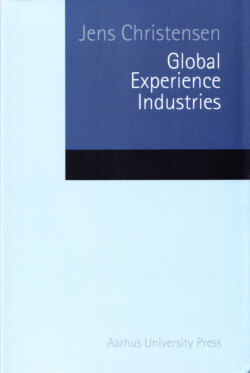Читать книгу Global Experience Industries - Jens Christensen - Страница 55
На сайте Литреса книга снята с продажи.
Amusement Parks
ОглавлениеAmusement parks are typically outdoor venues that provide rides as their primary attraction.116 An amusement park addresses adults, as well as teenagers and children. Spending consists of admission fees, rides, food, souvenirs, and other related purchases made at the parks. The world spending in amusement parks is growing from $19 billion in 2001 to $22 billion in 2005, with a projected $28 billion in 2010 (Table 7). The US will remain the largest market, including half the world market, while Asia Pacific will be the fastest-growing market. The West European market is also growing.117
In the US, more than 300 million people annually attend amusement parks, spending more than ten billion dollars, half in destination parks and half in regional parks. One-third visit large destinations parks and two-thirds the regional parks. While the Disney Worlds and Disneyland dominate destination parks, major regional parks include Six Flags, Anheuser Park, Cedar Fair and Paramount Parks, all backed by large corporate ownerships. The US parks also dominate the Canadian amusement parks.
TABLE 7 The Global Amusement Parks Market in $bn, 2001-2010
Source: PWC. Global Entertainment and Media Outlook, 535-562.
Destination parks tend to be open year-round, and people generally plan their trips to them far in advance. As a result, normal weather conditions such as rainy days have relatively little impact on attendance levels at destination parks. By contrast, many of the regional parks are open only during the summer, meaning that the Memorial Day, Fourth of July, and Labor Day periods provide a significant portion of their total attendance. So a rainy Memorial Day or Labor Day has a much greater impact on the regional parks, because potential visitors can modify their plans on short notice.
While destination parks address families, the regional parks have been appealing mostly to teenagers looking for thrilling experiences. Because of declining attendance, regional parks are changing their profile towards family rides and experiences, including more shows, parades, fireworks, coasters, adventure rides, water parks as well as indoor water parks.
The West European amusement park market has grown from $3 billion in 2001 to $4 billion in 2005, with a projected $5 billion in 2010. Attendance in 2005 reached approximately 125 million visitors. France has a major amusement park market and has the most popular parks in the region. Disneyland Paris and Walt Disney Studios Park attract more than 12 million visitors annually, about 10 percent of the regional total. The UK has a number of amusement parks, too. The largest, Blackpool Pleasure Beach, attracts 6 million visitors annually. The German market includes Europa Park, the fourth most-popular park in Europe. Tivoli Gardens in Copenhagen is the third largest park. The ten largest West European parks had 44 million visitors in 2005, about 40 percent of the regional total.
Although amusement parks have a long history in Europe, Europe is a less mature market than the US in that new parks are still opening in many markets. However, the new parks will be relatively small compared to the major parks that opened in recent years, such as Walt Disney Studio Park in Paris and Warner Brothers Movie World in Madrid in 2002. Disney is strongly positioned in Europe. A number of small parks are being planned in Eastern Europe and the Middle East. In Dubai, however, the world’s largest tourism, leisure, and entertainment development is being built and expected to be open in 2008. It will include several amusement parks, the largest shopping mall in the world, and a variety of residential and recreational facilities.
A consolidation of the European park industry is taking place, with many of the parks owned by private equity houses rather than group operators. Dubai International Capital, a firm controlled by the Dubai government, bought in 2005 the Tussauds Group, Europe’s largest attractions operator. The Tussauds Group owns four parks, Alton Towers, Chessington World of Adventures, and Thorpe Park in the UK, and Heide Park in Germany, as well as a number of other attractions, including Madam Tussauds Wax museum. The US based private equity firm Blackstone Group acquired the Merlin Entertainment Group in 2005. Merlin operates numerous attractions in eight European countries. In 2005, the Blackstone Group purchased the four Legolands, too, in the UK, Denmark, Germany and California. Merlin Entertainments is now the third largest operator of attractions in Europe, surpassed only by Disney and Tussauds. Merlin will turn the four Legolands into destination resorts by adding hotels.
Japan is by far the largest market in the region, spending more than half of the $6 billion total in 2005. China is the second-largest marked with some $1 billion in 2005. Total attendance in 2005 was 234 million visitors. Lower admission levels in merging countries such as China, India and the Philippines yield a relatively lower market than in Western Europe, the US and Japan. New Disneylands are being opened in Hong Kong and China, and more are expected to come. Disneyland Tokyo and Tokyo Disney Sea are the two largest Asian Pacific amusement parks. Except for Disneyland and Ocean Park in Hong Kong, all the major parks are located in Japan and South Korea. Of the other media conglomerates, Universal, Paramount and Warner have, or are, planning parks in Asia Pacific, too, just as in the US and Europe. China and India, in particular, contain a large potential of new parks.
